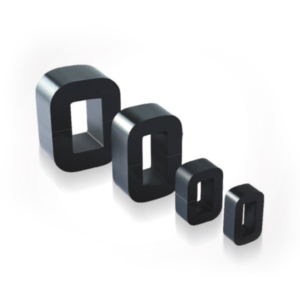
Understanding Transformer Core Efficiency
Definition of transformer core efficiency and its relevance in power distribution
Transformer core efficiency describes how well the transformer’s core transfers energy between circuits while minimizing power losses. In power distribution systems, where transformers are vital for voltage transformation, efficiency ensures minimal energy wastage during transmission. Efficient transformer cores enhance the effectiveness of electrical systems, optimizing energy usage and cutting unnecessary costs linked to power losses.
Factors Influencing Transformer Core Efficiency
Material Choice:
- The type of material used in constructing transformer cores greatly impacts their efficiency. Materials with high magnetic permeability, such as silicon steel or amorphous metal alloys, are commonly chosen for their ability to efficiently conduct magnetic flux and minimize energy losses.
Design:
- The design of the transformer core, including its shape, size, and configuration, influences its efficiency. Well-designed cores with optimized geometries ensure that magnetic flux is evenly distributed throughout the core, minimizing losses and maximizing energy transfer efficiency.
Lamination Techniques:
- Lamination plays a crucial role in improving transformer core efficiency. By stacking and bonding thin layers of magnetic material, lamination reduces eddy currents and hysteresis losses, resulting in enhanced performance and efficiency. Different lamination techniques, such as interleaved stacking or welded stacking, can further optimize core efficiency by minimizing energy losses.
Impact of Efficient Transformer Cores
Reduction of Power Wastage through Optimized Transformer Core Design
Efficient transformer cores play a crucial role in reducing power wastage through optimized design. By minimizing energy losses during the transformation process, these cores ensure that a higher percentage of the energy input is effectively transferred between circuits. This reduction in power wastage leads to greater efficiency in electrical systems, resulting in cost savings for consumers and reduced strain on power generation facilities.
Contribution to Overall Energy Conservation and Sustainability Efforts
The adoption of efficient transformer cores contributes significantly to broader energy conservation and sustainability efforts. By reducing power wastage, these cores help to conserve valuable resources and minimize the environmental impact associated with energy production and consumption. Additionally, the increased efficiency of electrical systems resulting from the use of efficient transformer cores helps to reduce greenhouse gas emissions and mitigate climate change.
Overall, the impact of efficient transformer cores extends beyond individual electrical systems, contributing to global efforts to build more sustainable and environmentally friendly energy infrastructures.
Strategies for Minimizing Power Wastage
Lamination Techniques and Their Role in Enhancing Transformer Core Efficiency
Lamination techniques significantly enhance core efficiency by reducing power wastage. By meticulously stacking and bonding thin layers of magnetic material, lamination minimizes energy losses linked to eddy currents and hysteresis. Techniques like interleaved stacking or welded stacking further optimize core efficiency by ensuring uniform flux distribution and reducing magnetic flux leakage. These techniques are essential for maximizing transformer core performance and enhancing overall energy efficiency in electrical systems.
Advanced Materials and Technologies for Improving Transformer Core Performance
Utilizing advanced materials and technologies effectively minimizes power wastage in transformer cores. Materials like silicon steel or amorphous metal alloys, renowned for their high magnetic permeability, are commonly chosen for core construction. Furthermore, ongoing advancements in material science continually yield new materials with enhanced performance characteristics, further boosting core efficiency. Technologies such as magnetic flux control devices and advanced insulation materials also play pivotal roles in reducing power losses and enhancing overall core performance. Additionally, we’ll discuss the significance of insulation resistance and dielectric strength in preventing electrical breakdown and ensuring operational safety.
Innovative design approaches are vital for maximizing core efficiency and minimizing power wastage. Core shape, size, and configuration are critical factors in optimizing performance. Engineers utilize advanced computer modeling and simulation techniques to develop optimized core designs, reducing energy losses and maximizing efficiency. Additionally, integrating smart monitoring and control systems enables real-time optimization of transformer core operation, further enhancing energy efficiency and reducing power wastage.
In conclusion, strategies for minimizing power wastage in transformer cores encompass a combination of lamination techniques, advanced materials and technologies, and innovative design approaches. By implementing these strategies, engineers can enhance transformer core efficiency, optimize energy usage, and reduce unnecessary costs associated with power losses in electrical systems.